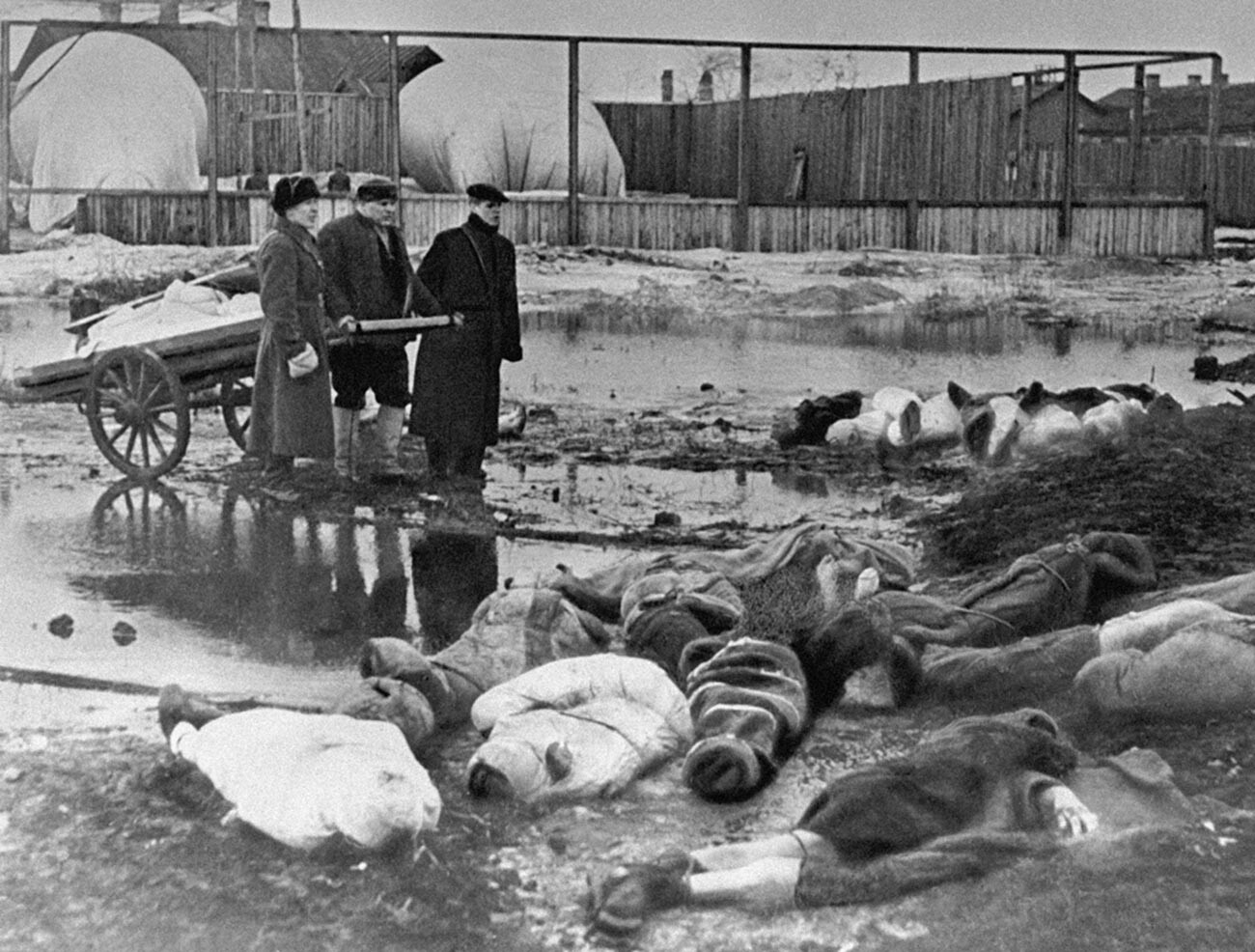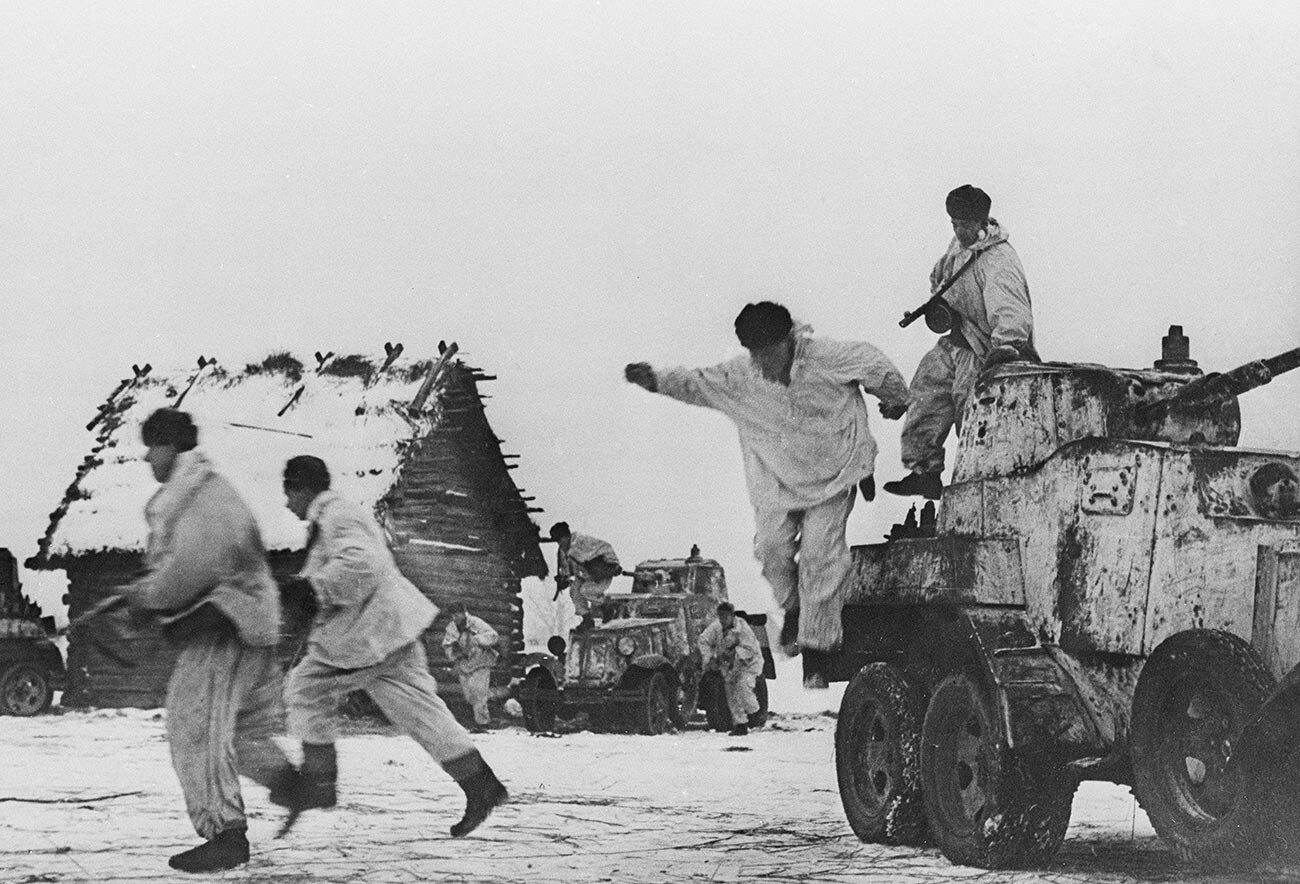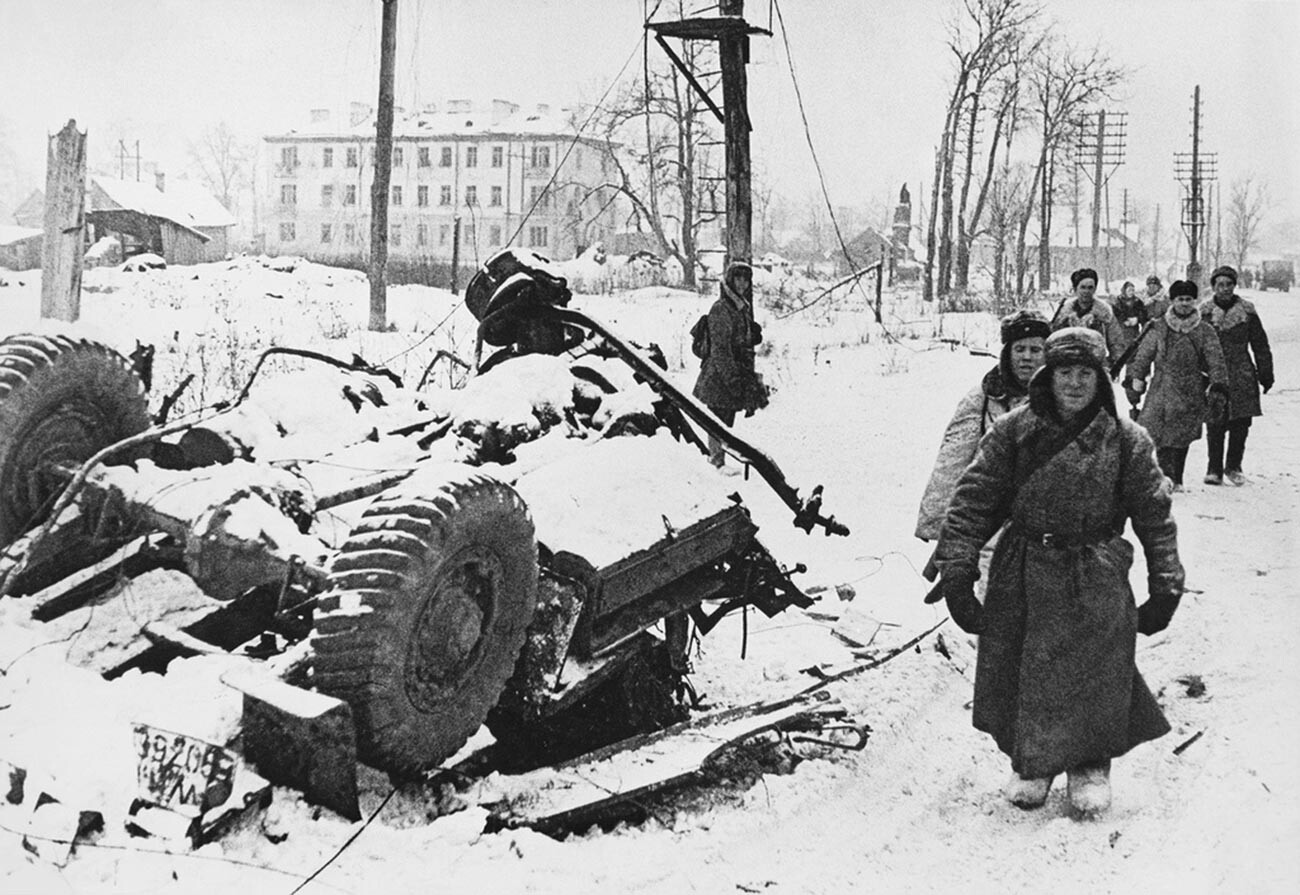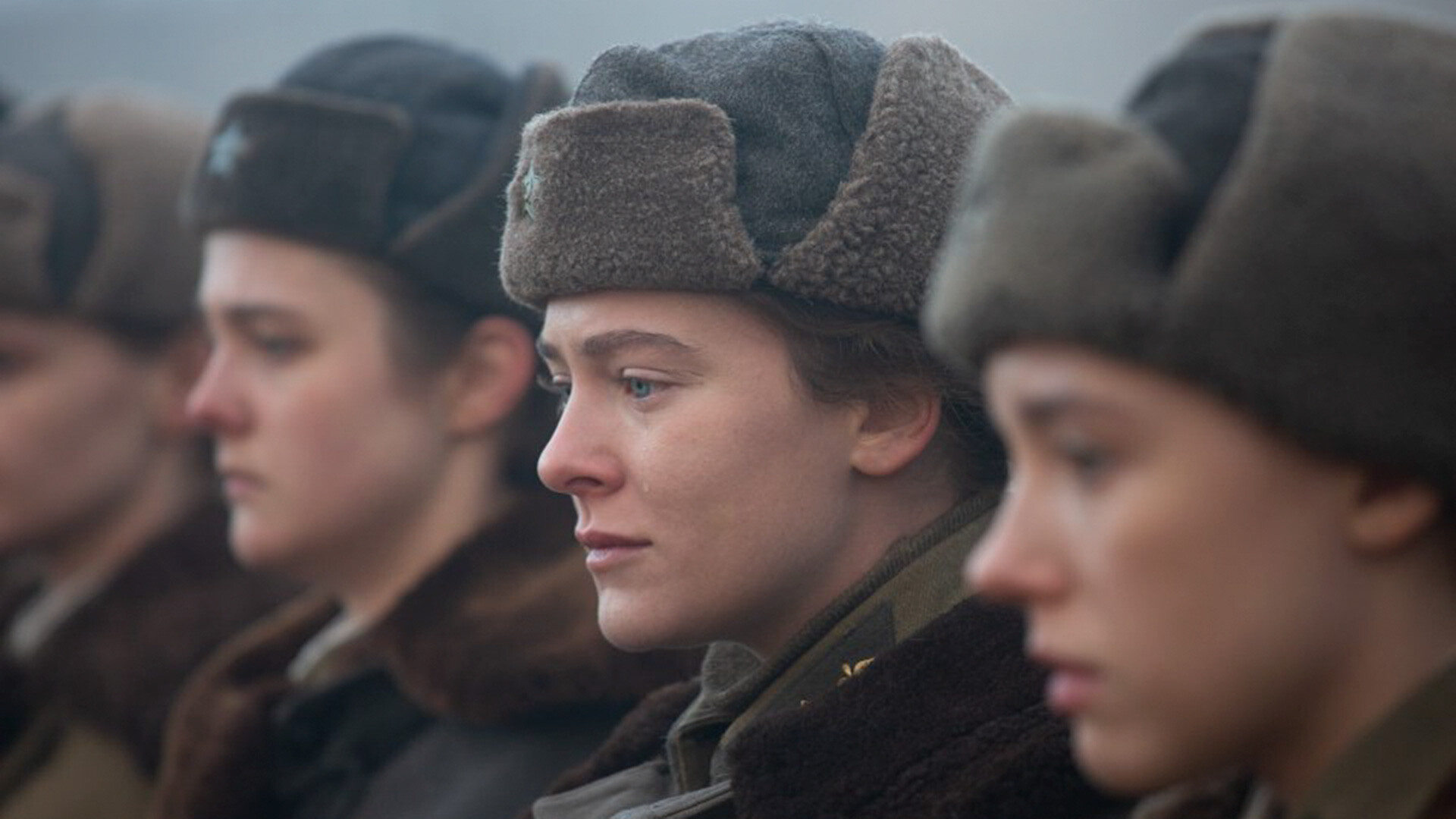
How the Red Army broke the siege of Leningrad (PHOTOS)

On September 8, 1941, the forces of Germany’s Army Group North took the town of Shlisselburg on Lake Ladoga, thus completing the encirclement of Leningrad by land. More than 2.5 million inhabitants and about 500,000 soldiers of the Red Army found themselves trapped in the city.
Only a water route across Lake Ladoga linked the city, besieged as it was by German and Finnish troops, to the “mainland”. This “Road of Life” was used for sending food and ammunition to Leningrad and evacuating its population.
 “Road of Life.”
“Road of Life.”
But neither the “Road of Life”, which was under constant enemy fire, nor Soviet transport aviation were able to organize full-scale supplies to the large metropolis. In the Winter of 1941, terrible starvation engulfed Leningrad: People fainted from exhaustion right at their workplaces, cases of cannibalism were recorded and the presence of hundreds of corpses strewing the streets quickly stopped shocking anyone.
In 1941 and 1942, the Red Army repeatedly tried to break the siege of the city but, owing to a lack of coordination among military units and a lack of manpower, resources and combat experience, these attempts invariably ended in failure. At the same time, the constant pressure that Soviet troops exerted on Army Group North did not allow the German command to transfer their reserves from Leningrad to other sectors of the front.
 Leningrad during the siege.
Leningrad during the siege.
The inhabitants of the city on the Neva River greeted the New Year of 1943 in much better shape than a year earlier: Subsidiary farms had been organized in the unoccupied suburbs, bread rations had been increased, public transport had partially begun to run and houses had electricity for a few hours a day.
Nevertheless, Leningrad still suffered severely, as the siege maintained its grip. “We shall continue to walk with you, Leningrader, through the cold and the battles, through the fire, mud and blood, the groans and the gnashing. We shall still have our fair share of ordeals to live through. Let our fraternal solidarity be even stronger! Prepare to strike!” read a New Year speech by writer Vsevolod Vishnevsky.
 A farm near the Saint Isaac's Cathedral in Leningrad.
A farm near the Saint Isaac's Cathedral in Leningrad.
Preparations for a strike were, indeed, under way. After the colossal November success of Soviet troops at Stalingrad and the changed strategic situation on the Soviet-German front, the Supreme High Command Headquarters took the decision to launch a large-scale offensive codenamed ‘Operation Iskra’ (‘Spark’) to break the blockade. Set for January 1943, the offensive was planned to take place in the area of the Shlisselburg-Sinyavino salient - only 15 km separated the defenders of the city from the “mainland” there.
The idea was for the troops of the Leningrad Front under General Leonid Govorov to break the encirclement from the inside, while the forces of the Volkhov Front under General Kirill Meretskov would break through from the outside to meet them.
 Children of Leningrad.
Children of Leningrad.
The strike groups numbered about 300,000 men, while the Germans had only 60,000 available in the salient. Also, the Soviet troops had achieved a sixfold superiority over the enemy in artillery, tenfold in tanks and twofold in aircraft.
It was no easy task to cross these 15 km, however. In the years of the siege, the Wehrmacht had turned the salient into a highly fortified zone with numerous strongpoints, while the barely passable marshy terrain between them was strewn with barbed wire entanglements and endless mine fields.
 Soviet soldiers of the 115th division getting ready for a battle in a trench on the left bank of the Neva River.
Soviet soldiers of the 115th division getting ready for a battle in a trench on the left bank of the Neva River.
Soviet troops spent the whole of December intensively preparing for ‘Operation Iskra’. In training camps in the rear, members of assault units and subunits stormed specially-built German defensive positions.
“It was a particular concern for us that the preparations for the breakthrough operation should be kept under wraps,” recalled the deputy commander of the Volkhov Front, General Ivan Fedyuninsky. “The troop regrouping was conducted strictly at night or in non-flying weather. Only those units and subunits that were immediately adjacent to the enemy took part in probing actions and night reconnaissance. These measures paid dividends. The enemy only managed to establish that our troops were getting ready for an offensive shortly before the start of the operation and, even then, the Nazi command could not determine the timing and force of the attack.”
 Soviet paratroopers attack near Krasnoye Selo.
Soviet paratroopers attack near Krasnoye Selo.
It was planned to “light” the “Spark” on New Year’s Day of 1943, but the operation had to be postponed a bit, because of a protracted thaw. Finally, on the morning of January 12, the full might of Soviet artillery and aviation was unleashed against the enemy positions. “To this day, I can’t forget the impression left on me by the devastating fire of the Russian guns,” asserted German soldier Wilhelm Lahmeyer. “When I recall all that infernal din, the detonations of shells and mortars, it makes my flesh creep again and again.”
Following this, the troops of two fronts simultaneously went on the offensive. Advancing from the direction of Leningrad, the units crossed the Neva River, which had frozen by this time, and proceeded to drive the enemy out of nearby centers of population. The thin ice would not have supported heavy and medium tanks, so the soldiers had to make do with light T-60s and T-26s, as well as ordinary armored vehicles. One of the T-60s masterfully lured two of the newest German PzKpfw VI ‘Tiger’ heavy tanks into the line of fire of Soviet artillery and they were rapidly destroyed. Another “predator” that had got bogged down in peat and had been abandoned by its crew was seized in short order fully intact.
 Soviet artillery in action.
Soviet artillery in action.
Slowly, but surely, the troops of the Volkhov Front made headway, even as the enemy threw its hastily brought up reserves into battle against them. By January 14, fierce fighting was under way for Shlisselburg and, on the morning of January 18, a historic event unfolded: units of the Volkhov Front’s 2nd Shock Army met up with units of the 67th army of the Leningrad Front near Workers’ Settlement No. 1.
“I witnessed the joy with which soldiers of the fronts that had broken the siege rushed towards each other. Ignoring the enemy artillery shells arriving from the direction of the Sinyavino Heights, the soldiers firmly and fraternally embraced each other. It was a truly hard-won joy!” recalled Georgy Zhukov, who was at an observation post of the 2nd Shock Army command. During ‘Operation Iskra’, the commander was coordinating the operations of the two fronts.
 Liberated Shlisselburg.
Liberated Shlisselburg.
The Soviet troops turned southwards, intending to extend the offensive further, but, in the end, they were unsuccessful and were forced to go on the defensive. Nevertheless, a direct land route to and from the city had been re-established. It had cost the lives of 33,000 Red Army soldiers. The Germans lost around 12,000 men.
Construction of a railroad immediately began in the corridor that had been cleared - it was a strip just 11 km wide. The railroad became known as the ‘Road of Victory’. The first train carrying food supplies arrived in Leningrad on February 7.
 Soviet soldiers attack.
Soviet soldiers attack.
Despite the fact that it would be another year before the siege was fully lifted, the long-suffering city could finally breathe more easily. “The siege has been broken. We have spent a long time waiting for this day. We always believed it would come,” writer Olga Bergholz told Leningraders in a radio broadcast. “Our bodies swelled and went black from starvation, we collapsed from exhaustion on streets disfigured by the enemy and it was only our belief that the day of liberation would come that kept us going. And each one of us, as we looked death in the face, toiled for the sake of our defense, for the sake of the life of our city and each of us knew that the day of reckoning would dawn and that our army would break through and lift the arduous siege.”
 Soldiers of Leningrad and Volkhov Fronts greeting each other after breaking the blockade.
Soldiers of Leningrad and Volkhov Fronts greeting each other after breaking the blockade.












